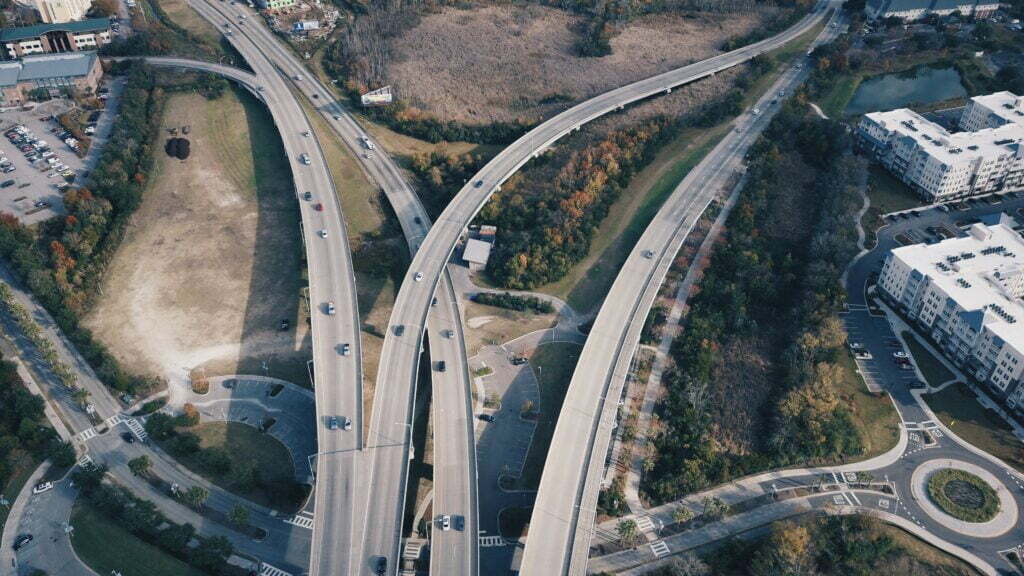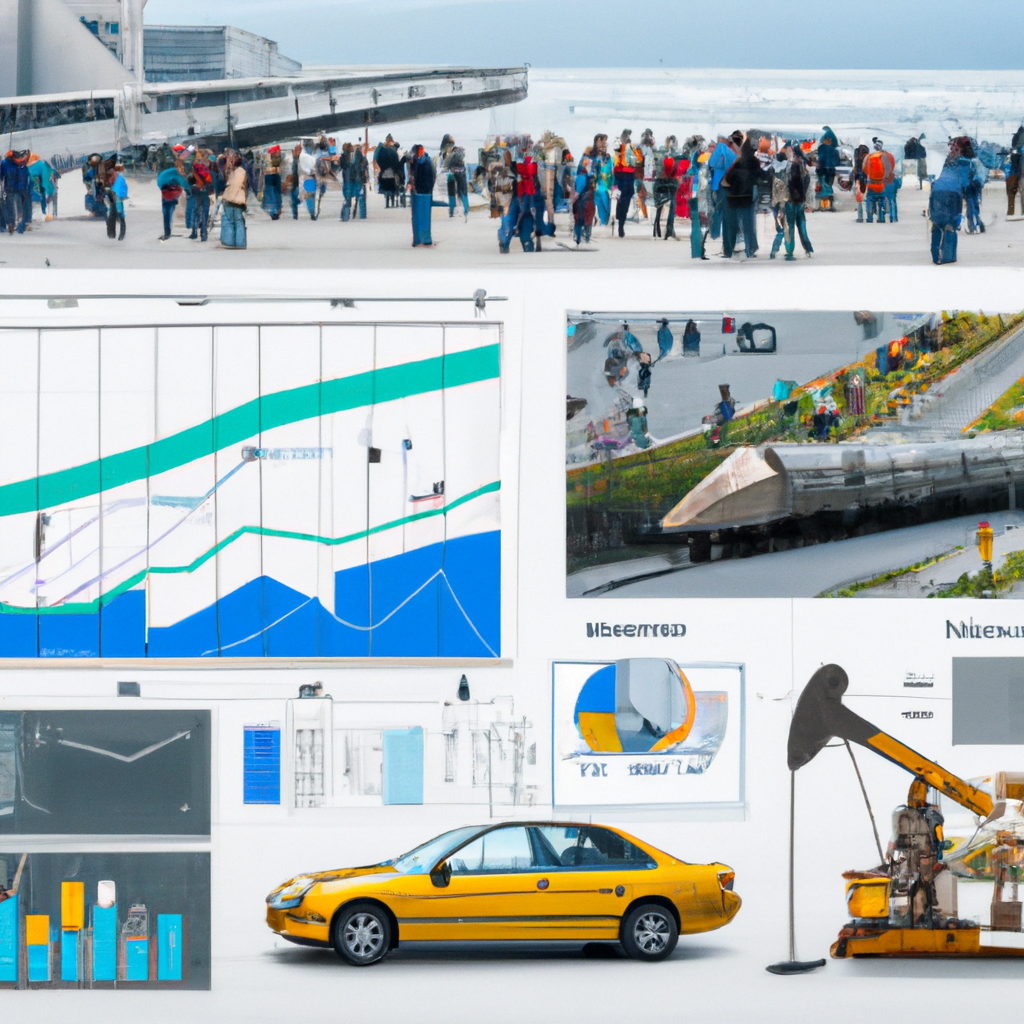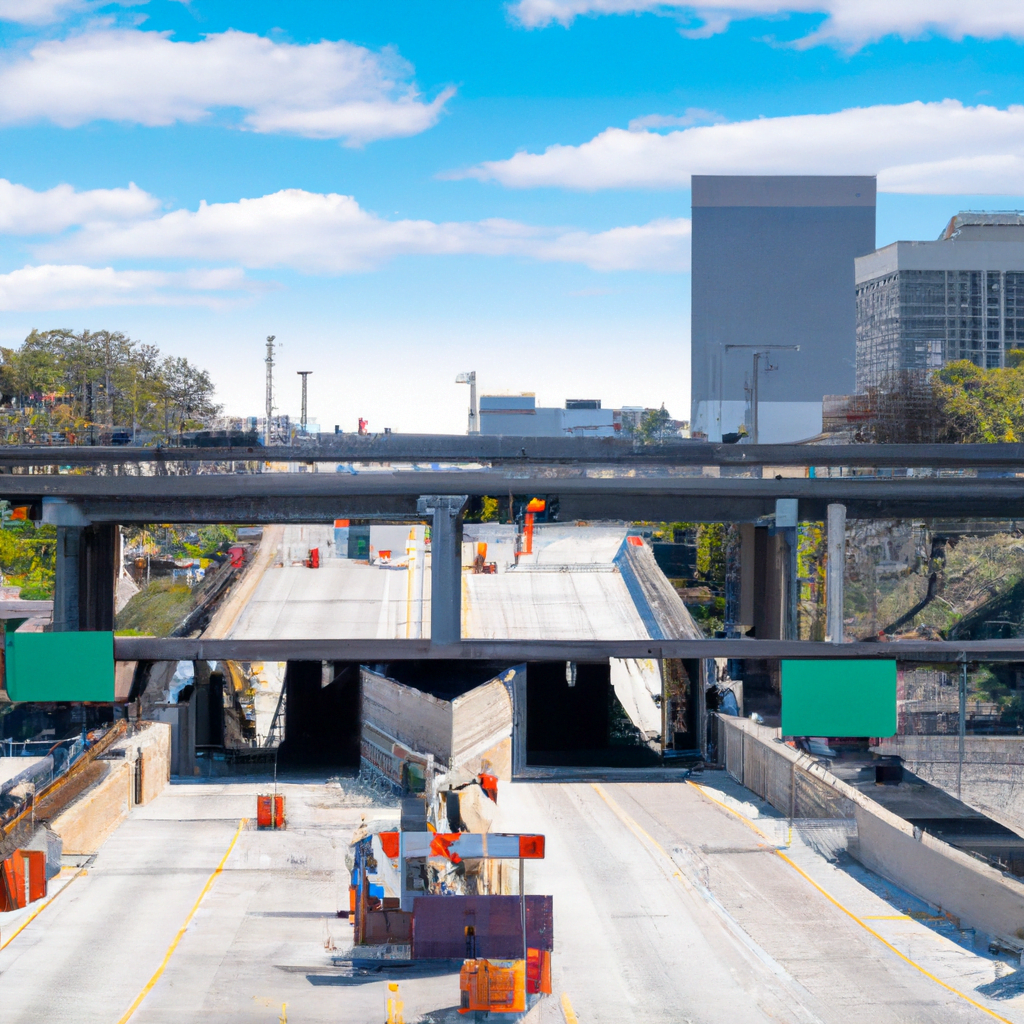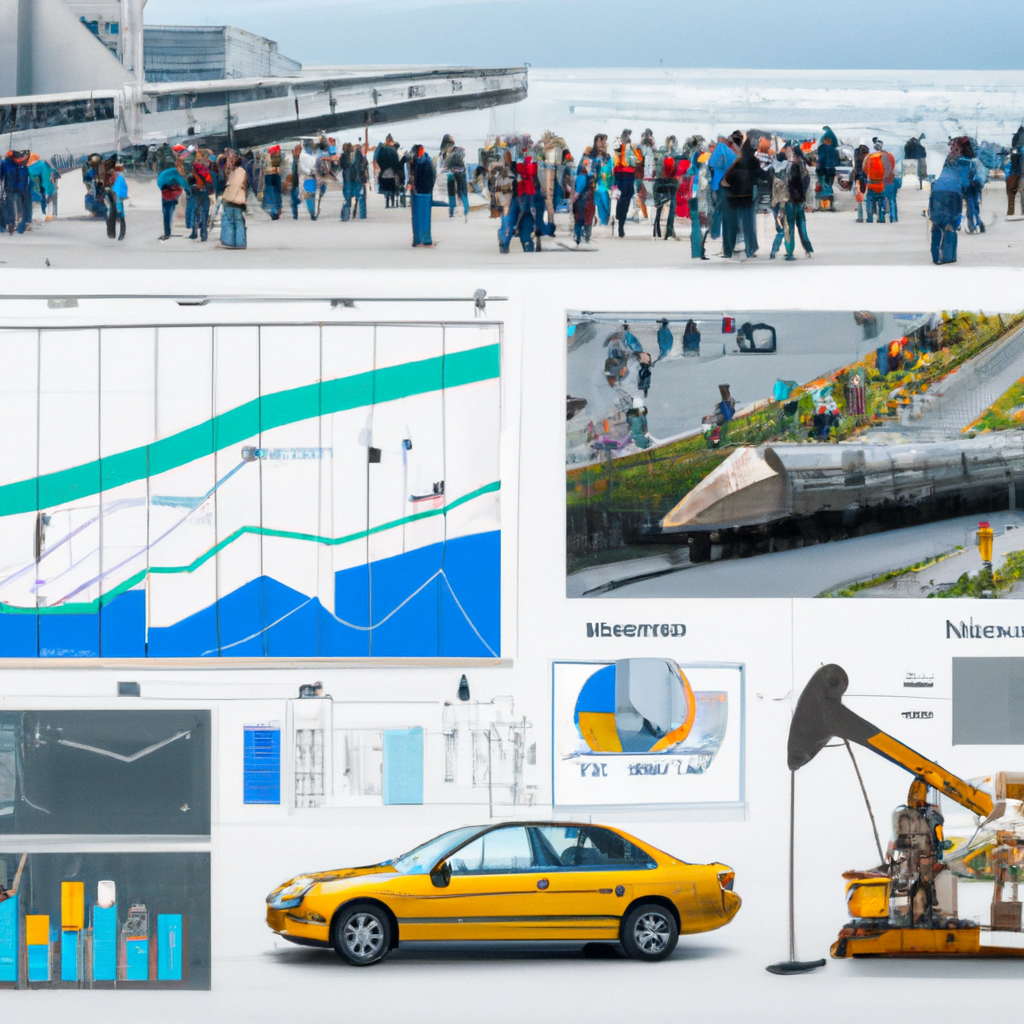Imagine a world where your daily commute is smooth and stress-free, where public transportation is efficient and reliable, and where utilities seamlessly support your everyday needs. Sounds like a dream, right? Well, it doesn’t have to be. In our article, “Building Better Connections: The Role of Infrastructure Development in Enhancing Roadways, Public Transportation, and Utilities,” we will explore how the development of infrastructure, specifically focusing on roads, public transportation, and utilities, plays a crucial role in improving our lives. From reducing traffic congestion to promoting economic growth, let’s dive into the transformative power of infrastructure development.

This image is property of images.unsplash.com.
Understanding Infrastructure Development
Definition and importance
Infrastructure development refers to the planning, design, construction, and maintenance of physical facilities necessary for the functioning and development of a society. These facilities include roads, bridges, railways, airports, ports, public transportation systems, utilities (such as water supply and electricity), and other essential structures. Infrastructure development plays a crucial role in supporting economic growth, improving the quality of life for citizens, and fostering social development. It provides the foundation for various economic activities and enables efficient transportation, communication, and access to basic services.
Investment in Infrastructure Development in Egypt
Egypt recognizes the pivotal role of infrastructure development in achieving sustained economic growth and enhancing the country’s competitiveness. Significant investments have been made to improve the country’s infrastructure, with a particular focus on the road network, public transportation, and utilities. The government, in collaboration with the private sector, has launched ambitious projects to modernize and expand the infrastructure, ensuring the population’s needs are met and the economy is supported.
Infrastructure Development in the Road Network
Importance of roads to Egypt’s economic growth
The road network in Egypt serves as a critical artery for the country’s economic growth. It facilitates smooth movement of goods, services, and people, connecting various regions and enabling trade and commerce. Efficient roads contribute to increased productivity, reduced transportation costs, and improved access to markets and opportunities. Additionally, well-maintained road infrastructure supports tourism, as visitors can easily explore the country’s rich cultural heritage and natural attractions. Therefore, investing in the development and maintenance of roads has become a priority for Egypt.
Major road development projects in Egypt
Egypt has undertaken several significant road development projects aimed at improving connectivity and reducing congestion. The Cairo-Alexandria Desert Road, one of the most important highways in the country, has been expanded and upgraded to accommodate the increasing traffic. The New Valley Highway, connecting the Western Desert cities, has also undergone major enhancements to enhance transportation efficiency in the region.
Other notable road development projects include the Suez Canal Highway, the Luxor-Aswan Highway, and the Regional Ring Road. These initiatives contribute to the overall enhancement of the road network, improving accessibility, safety, and efficiency.
Challenges in the development of road infrastructure
Despite the ongoing efforts to develop road infrastructure in Egypt, several challenges persist. Insufficient funding and limited resources pose hurdles to the timely completion of projects. Additionally, the rapid urbanization rate and population growth demand continuous expansion and maintenance of the road network. Striking a balance between preserving historical and cultural sites and ensuring the connectivity of various regions is another challenge in road development. These challenges require effective planning, efficient resource allocation, and collaboration between the government, private sector, and communities.
Public Transportation and Its Role in Urban Development
Role of public transport in a city’s growth
Public transportation plays a crucial role in the growth and development of urban areas, enhancing mobility, reducing traffic congestion, and improving air quality. By providing affordable and accessible transportation options, it facilitates the movement of people within and between cities, fostering economic activities and social interactions. Efficient and reliable public transport systems reduce reliance on private vehicles, thus alleviating traffic congestion and reducing greenhouse gas emissions. Moreover, public transportation promotes social inclusivity by ensuring that people from different socio-economic backgrounds can access education, employment opportunities, and essential services.
Public transportation infrastructure in Egypt
Egypt has made significant strides in developing its public transportation infrastructure. The Cairo Metro, serving millions of commuters daily, is one of the largest and most successful rapid transit systems in Africa and the Middle East. It has expanded over the years, with the addition of new lines and stations to improve connectivity and coverage.
In addition to the metro, Egypt has invested in bus rapid transit (BRT) systems, such as the Cairo BRT and Alexandria BRT, to provide efficient transportation solutions within the cities. These systems prioritize dedicated bus lanes, efficient scheduling, and streamlined ticketing, ensuring reliable and convenient services for passengers.
Recent achievements and future plans in Egypt’s public transportation
Egypt’s public transportation sector has witnessed significant achievements in recent years. The introduction of contactless payment systems, such as smart cards and mobile payment apps, has simplified the fare collection process and improved the overall commuter experience. Additionally, efforts have been made to enhance the integration between different modes of transport, allowing seamless transfers and reducing travel times.
Looking ahead, Egypt has ambitious plans for the expansion and improvement of its public transportation infrastructure. The construction of new metro lines, extension of existing lines, and introduction of tram systems in various cities are part of the future development projects. These initiatives aim to further enhance connectivity, reduce congestion, and promote sustainable modes of transportation.
Important Role of Utilities: Water, Electricity, and More
Role of utilities in urban development
Utilities, including water supply, electricity, and other essential services, are crucial for the functioning and development of urban areas. Access to reliable utilities is essential for households, businesses, and industries, enabling them to meet their basic needs and carry out their operations efficiently. Water supply systems ensure safe and sufficient water for domestic, commercial, and agricultural purposes, improving quality of life and supporting economic activities. Similarly, a reliable electricity supply is vital for powering homes, businesses, and industries, driving economic growth and enabling technological advancements.
Investment in utilities infrastructure in Egypt
Recognizing the importance of utilities in supporting development, Egypt has made significant investments in improving its water supply, electricity, and other essential services. The government has implemented projects to expand and upgrade water treatment and distribution systems, ensuring a reliable supply of clean water to the population. Similarly, efforts have been made to enhance the capacity and efficiency of electricity generation, transmission, and distribution networks, reducing power shortages and improving reliability.
Egypt has also prioritized investments in renewable energy sources, such as solar and wind, to diversify its energy mix and reduce reliance on fossil fuels. These initiatives contribute to a sustainable and resilient utilities infrastructure in the country.
Recent achievements and future plans in Egypt’s utilities infrastructure
Egypt has achieved notable milestones in its utilities infrastructure. The completion of the New Cairo Wastewater Treatment Plant, the largest of its kind in Africa, has significantly improved wastewater management and sanitation services in the capital. Furthermore, the construction of the Benban Solar Park, one of the world’s largest solar energy installations, has positioned Egypt as a regional leader in renewable energy.
Moving forward, Egypt plans to continue investing in its utilities infrastructure. Projects related to water desalination, wastewater treatment, renewable energy expansion, and smart grid technologies are underway. These initiatives aim to improve service quality, promote sustainability, and meet the growing demands of the population.

This image is property of images.unsplash.com.
Interconnection of Roadways, Public Transportation and Utilities
Interdependence among roadways, public transport, and utilities
Roadways, public transportation systems, and utilities are interconnected components of urban infrastructure. Efficient road networks are essential for the smooth operation of public transportation, providing the necessary infrastructure for buses, trams, and other modes of transport to navigate. Furthermore, public transportation services rely on utilities such as electricity and fuel to operate effectively.
Similarly, utilities, particularly water and electricity, require well-maintained road infrastructure and public transportation systems for their distribution and delivery. The availability of reliable utilities is crucial in facilitating the operation and maintenance of roadways and public transportation networks.
Benefits of integrated infrastructure development
The integration of roadways, public transportation, and utilities brings numerous benefits to urban areas. Seamless connectivity between different modes of transport reduces travel times, enhances accessibility, and improves the overall commuter experience. Well-designed and integrated infrastructure encourages a shift towards sustainable modes of transportation, leading to reduced congestion, improved air quality, and a greener environment.
Integrated infrastructure development also contributes to economic growth and prosperity. Efficient road networks and public transportation systems facilitate the movement of goods and people, supporting trade, commerce, and tourism. Additionally, reliable utilities infrastructure promotes business activities, attracts investments, and enhances the livability of cities.
By recognizing and promoting the interconnection of roadways, public transportation, and utilities, Egypt can create a holistic and sustainable urban environment that benefits both its residents and the economy.
Current Landscape of Infrastructure Development in Egypt
Highlights of projects completed in recent years
Egypt has witnessed remarkable progress in infrastructure development in recent years. The completion of the New Administrative Capital, a modern city being built from scratch, stands out as a significant achievement. This project involves the construction of essential infrastructure, including roads, utilities, and public transportation systems, to support the growing population and shifting administrative headquarters.
Other noteworthy projects include the expansion and renovation of airports, such as Cairo International Airport and Hurghada International Airport, to accommodate the increasing air traffic and meet international standards. Additionally, efforts have been made to rehabilitate and upgrade ports, enhancing trade facilitation and improving logistics operations.
Current status of ongoing projects
Egypt continues to advance ongoing infrastructure projects that aim to enhance connectivity, efficiency, and sustainability. The construction of the Rod El Farag Axis, a major road project in Cairo, is underway to provide an additional transport route, reducing congestion in the capital. The expansion of the Suez Canal Economic Zone, a mega-project that includes the development of ports, industrial parks, and logistics centers, aims to attract investments and boost economic activities.
Egypt is also investing in the development of new cities, such as the New Alamein City and the New Mansoura City, to accommodate population growth and stimulate economic development in different regions.
Prospects for improvement and growth
The future prospects for infrastructure development in Egypt are promising. The government’s commitment to upgrading and expanding infrastructure, coupled with investments from the private sector, will continue to drive growth and improvement. Efforts to enhance the regulatory framework, streamline project approvals, and attract foreign direct investment will contribute to the successful implementation of infrastructure projects.
The focus on sustainability, resilience, and inclusivity will remain essential considerations in infrastructure development. By incorporating advanced technologies, promoting renewable energy solutions, and ensuring accessibility for all segments of the population, Egypt can build a better-connected and more livable urban environment.

This image is property of images.unsplash.com.
Financing Infrastructure Development
Role of government funding
Government funding plays a critical role in financing infrastructure development in Egypt. The government allocates a significant portion of its budget to infrastructure projects, recognizing their importance in supporting economic growth and improving quality of life. Public funds are used to initiate and complete projects, covering costs related to planning, design, construction, operation, and maintenance.
The government also seeks financial support from international organizations, such as the World Bank and the African Development Bank, to fund infrastructure projects. These institutions provide loans, grants, and technical assistance, helping Egypt bridge the financing gap and implement projects effectively.
Role of private sector investment
Private sector investment is another important source of financing for infrastructure development in Egypt. The government encourages private sector participation through public-private partnerships (PPPs), where private entities collaborate with the government to finance, construct, operate, and maintain infrastructure projects. The private sector brings expertise, innovation, and funding capabilities, while sharing the risks and rewards of the projects.
Furthermore, the government offers incentives and creates a conducive business environment to attract local and foreign investment. These investments not only provide financial resources but also bring valuable experience, technology, and management skills to infrastructure projects.
Public-Private Partnership models
Egypt has implemented various models of public-private partnerships to finance and execute infrastructure projects. Examples include build-operate-transfer (BOT) and build-own-operate-transfer (BOOT) schemes, where private entities are responsible for financing, constructing, and operating the infrastructure facilities for a specified period. Once the concession period ends, the infrastructure assets are typically transferred to the government.
Public-private partnerships have been successfully used in the development of major infrastructure projects, including toll roads, airports, and utilities. These partnerships ensure efficient resource allocation, risk sharing, and improved service delivery, ultimately benefiting the economy and citizens.
By leveraging both government funding and private sector investment, Egypt can secure the necessary resources to implement infrastructure projects effectively and sustainably.
Impact of Infrastructure Development on Real Estate in Egypt
Effects on residential property development
Infrastructure development has a profound impact on residential property development in Egypt. The provision of well-connected road networks, efficient public transportation systems, and reliable utilities enhances the desirability and value of residential properties. Improved accessibility to employment centers, educational institutions, healthcare facilities, and recreational areas increases the attractiveness of residential areas, driving demand and encouraging investment in housing projects.
Furthermore, infrastructure development in previously underdeveloped or remote areas creates opportunities for new residential developments. As connectivity improves, regions that were once considered less desirable may become viable options for homebuyers, leading to increased housing supply and growth in real estate markets.
Effects on commercial property development
Infrastructure development also significantly impacts commercial property development. Adequate road connectivity, along with efficient public transportation systems, supports logistics operations, enabling the smooth movement of goods and services. This encourages the establishment of warehousing facilities, distribution centers, and manufacturing plants in strategic locations, leading to increased demand for commercial properties.
Additionally, the availability of reliable utilities, such as electricity and water, is crucial for commercial activities. Industries and businesses require uninterrupted power supply and sufficient water resources to operate efficiently. Therefore, the development of utilities infrastructure plays a critical role in attracting commercial investments and supporting economic activities.
Emerging trends in real estate due to infrastructure development
Infrastructure development in Egypt has sparked several emerging trends in the real estate sector. The concept of transit-oriented development (TOD) has gained traction, focusing on the integration of residential, commercial, and recreational spaces around public transportation hubs. TOD aims to promote sustainable and livable communities, where residents can easily access public transportation options, reducing reliance on private vehicles.
Additionally, mixed-use developments have become increasingly popular, combining residential, commercial, and recreational elements within a single project. The integrated nature of these developments aims to maximize land use efficiency, optimize resource allocation, and create vibrant urban environments.
Moreover, the emphasis on sustainability and green infrastructure has influenced real estate development. Developers are incorporating eco-friendly features, such as renewable energy systems, water conservation measures, and green spaces, to attract environmentally conscious buyers and tenants.
The ongoing infrastructure development in Egypt will continue to shape the real estate landscape, creating new opportunities and transforming urban spaces.

Challenges in Infrastructure Development
Issues in financing
One of the primary challenges in infrastructure development is securing adequate financing. Despite the government’s commitment and private sector participation, the funding required for large-scale infrastructure projects is substantial. Limited fiscal resources, competing priorities, and the difficulty of attracting private investment for certain projects pose hurdles in financing.
Public-Private Partnerships (PPPs) can help address the financing gap; however, the complexity in structuring and implementing such arrangements can present challenges. Balancing the financial viability of projects while ensuring affordability for users and minimizing the burden on the government requires careful planning and risk assessment.
Technical challenges in project implementation
Infrastructure development projects often face technical challenges related to engineering, construction, and project management. Complexities in design and implementation, land acquisition and rights-of-way issues, and coordination among multiple stakeholders can cause delays and cost overruns.
Furthermore, the application of advanced technologies and sustainable practices in infrastructure projects can present technical challenges. Ensuring compatibility between new infrastructure and existing systems, training personnel to operate and maintain modern facilities, and incorporating environmentally-friendly practices require expertise and careful integration.
Social and environmental concerns
Infrastructure development projects can have social and environmental impacts that need to be carefully addressed. Land acquisition and relocation of communities can lead to social dislocation and grievances if not handled sensitively. Environmental concerns, such as habitat destruction, air and water pollution, and increased carbon emissions, must be mitigated through environmentally sustainable design and operation practices.
Consultation with affected communities, ensuring proper compensation and resettlement, and conducting comprehensive environmental impact assessments are essential to mitigate the negative social and environmental effects of infrastructure projects. Engaging with local communities, civil society organizations, and environmental experts can help incorporate social and environmental considerations into the planning and implementation processes.
Path Towards Sustainable and Inclusive Infrastructure Development
Importance of incorporating sustainability in infrastructure projects
Sustainability is a crucial aspect of infrastructure development, ensuring that projects meet present needs without compromising the ability of future generations to meet their own needs. By incorporating sustainable practices, infrastructure projects can minimize environmental impacts, promote resource efficiency, and enhance resilience to climate change.
Efforts should be made to incorporate energy-efficient technologies, renewable energy sources, and environmentally friendly materials in infrastructure projects. Water conservation measures, waste management systems, and green spaces should also be considered to create sustainable urban environments. Furthermore, promoting walking, cycling, and public transportation options can reduce reliance on private vehicles, leading to improved air quality and reduced greenhouse gas emissions.
Ensuring inclusivity in the benefits of infrastructure development
Inclusive infrastructure development aims to ensure that the benefits of infrastructure projects are accessible to all segments of society, regardless of their socio-economic status. Ensuring affordability, accessibility, and universal design principles should be key considerations in infrastructure planning and implementation.
Efforts should be made to provide affordable housing options and prioritize the development of infrastructure in underserved areas. Accessibility features, such as ramps, elevators, and tactile indicators, should be incorporated into transportation systems and public spaces to cater to people with disabilities. Additionally, public consultation and engagement with marginalized communities can ensure that their needs and concerns are taken into account in infrastructure projects.
Policy recommendations for future projects
To promote sustainable and inclusive infrastructure development in Egypt, policymakers should consider the following recommendations:
Establish a dedicated infrastructure fund: Creating a specialized fund can help address the financing needs of infrastructure projects, attracting both public and private investment. The fund can prioritize projects that align with sustainable development goals and promote inclusivity.
Strengthen regulatory frameworks: Clear and transparent regulations can facilitate private sector participation and provide a conducive environment for investment. Streamlining approval processes, ensuring fair competition, and establishing dispute resolution mechanisms can improve the ease of doing business and attract more investors.
Enhance coordination and collaboration: Robust coordination among government agencies, private sector stakeholders, and local communities is crucial for effective infrastructure development. Regular stakeholder engagement, information exchange, and joint decision-making can facilitate better project planning and implementation.
Prioritize capacity building: Building the technical and managerial skills of professionals involved in infrastructure development is essential. Providing training and knowledge-sharing platforms can enhance expertise in sustainable and inclusive infrastructure practices.
Promote public awareness and participation: Raising public awareness about the benefits of infrastructure development and soliciting public input can foster a sense of ownership and transparency. Improved public participation leads to better decision-making and promotes accountability in infrastructure projects.
By adopting a sustainable and inclusive approach to infrastructure development, Egypt can build a resilient, livable, and prosperous future for its citizens while preserving its natural and cultural heritage.


